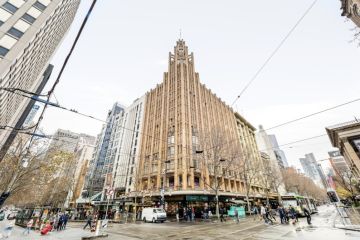Home ownership for older Australians: Promoted as 'ageing well', but increasingly out of reach

Government strategies to manage population ageing largely assume that older Australians are home owners. There is often an implied association between home ownership and ageing well: that is, older Australians who own homes are seen as having made the right choices and as being less of a budget burden.
The problem with this approach is that not everyone is or can be a home owner. A great many households are, for many reasons, locked out of home ownership.
My analysis of 20 years of federal government ageing strategies and age-focused analyses of the housing system shows that Australian governments of all persuasions have shared three common beliefs about the economic value of home ownership in later life. They have promoted home ownership as:
– somewhere to live;
– an asset to rent or sell; and
– a way to access and spend equity.
Somewhere to live
Australian governments have valued and promoted home ownership because it provides somewhere to live in later life, with no regular ongoing costs such as rent.
As a 2015 Productivity Commission report argued:
Because the majority of older Australian households own their homes outright, their housing costs are typically very low, yet they enjoy the benefits from continuing to live in their homes. […] This source of value (relative to overall household expenditure) becomes markedly more important with increasing age.
Owning a home is seen as largely cost-neutral, though the costs of maintaining housing are recognised in some documents. In contrast, the privately rented home is discussed as an ongoing financial burden.
- Related: Life-long renters face financial stress in retirement
- Related: Why I bought my retirement home in my 20s
- Related: Never buying property means saving more for retirement
Home ownership is seen to provide economic security by freeing up income, so that people have greater disposable income for discretionary lifestyle spending in later life.
In other words, owning a home enables home owners to be consumers. While this can be seen as ensuring quality of life in older age, it also connects strongly with a broader government goal of growth in consumer spending.
An asset to rent or sell
Governments have also valued home ownership as an asset that people can rent out or sell so they can pay for costs associated with moving to “age-appropriate” housing. This includes paying bonds for retirement villages or nursing homes.
It has been suggested that older home owners are better equipped than, say, renters with the financial resources to make “appropriate” choices for housing and care in later life.
For example, they might be able to afford to buy housing within an “active lifestyle community”. And any leftover funds can fund higher levels of consumption in retirement.
So, home ownership has been understood as an individualised way of managing the risks of ageing.
People who own higher-value housing are better off in this scenario, as they will reap greater profits if they sell their home, or secure a higher income if they rent it out.
However, these benefits can be difficult to access. This is due to the very high costs of housing in some cities, and the risks associated with some retirement housing.
Accessing (and spending) housing equity
The third way governments have seen value in home ownership is through new financial products that enable home owners to access – and spend – home equity.
Emphasis is usually placed on the capacity to make a proportion of the home “liquid” while retaining overall ownership and the ongoing right to live in the house. For governments, this has two benefits:
-
It enables older people to pay for more of the costs of older age, including for aged care. This is a way of shifting these costs away from the government in situations where people are seen as having the capacity to co-contribute.
-
It enables home owners “to pay for additional services over and above the approved care”, according to the Productivity Commission. This supports government goals for economic growth by expanding the aged care market.
Funds released in this way enable lifestyle “choice” and better care in older age.
Home owners are winners
These three benefits suggest a system in which home owners are equipped with greater spending power – and hence choice – in older age. They are likely to have access to higher levels of care, and to be more able to make choices that enable them to age “well”.
Quite curiously, in some documents baby boomers are distinguished as desiring higher-quality services in later life. The capacity to access and spend home equity is seen as enabling this possibility.
The promotion of home ownership as a way of funding care in later life is part of a broader policy trend toward making people personally responsible for the opportunities they have in life. While this may make intuitive sense, it is unjust because it ignores factors that shape income and investment opportunities, including home ownership, over the life course.
Data from the 2016 Census show that households living on the median single-person income could not afford the median rent in Australia, and that home ownership is increasingly out of reach.
Single older women are among the fastest-growing group of homeless people in Australia. And, for non-home owners, poverty in later life is on the rise.
![]() Australia needs ageing strategies that do more than assume everyone is a home owner – or that home ownership is a simple choice.
Australia needs ageing strategies that do more than assume everyone is a home owner – or that home ownership is a simple choice.
Emma Power, Senior Research Fellow, Geography and Urban Studies, Western Sydney University
This article was originally published on The Conversation. Read the original article.
We recommend
We thought you might like
States
Capital Cities
Capital Cities - Rentals
Popular Areas
Allhomes
More







